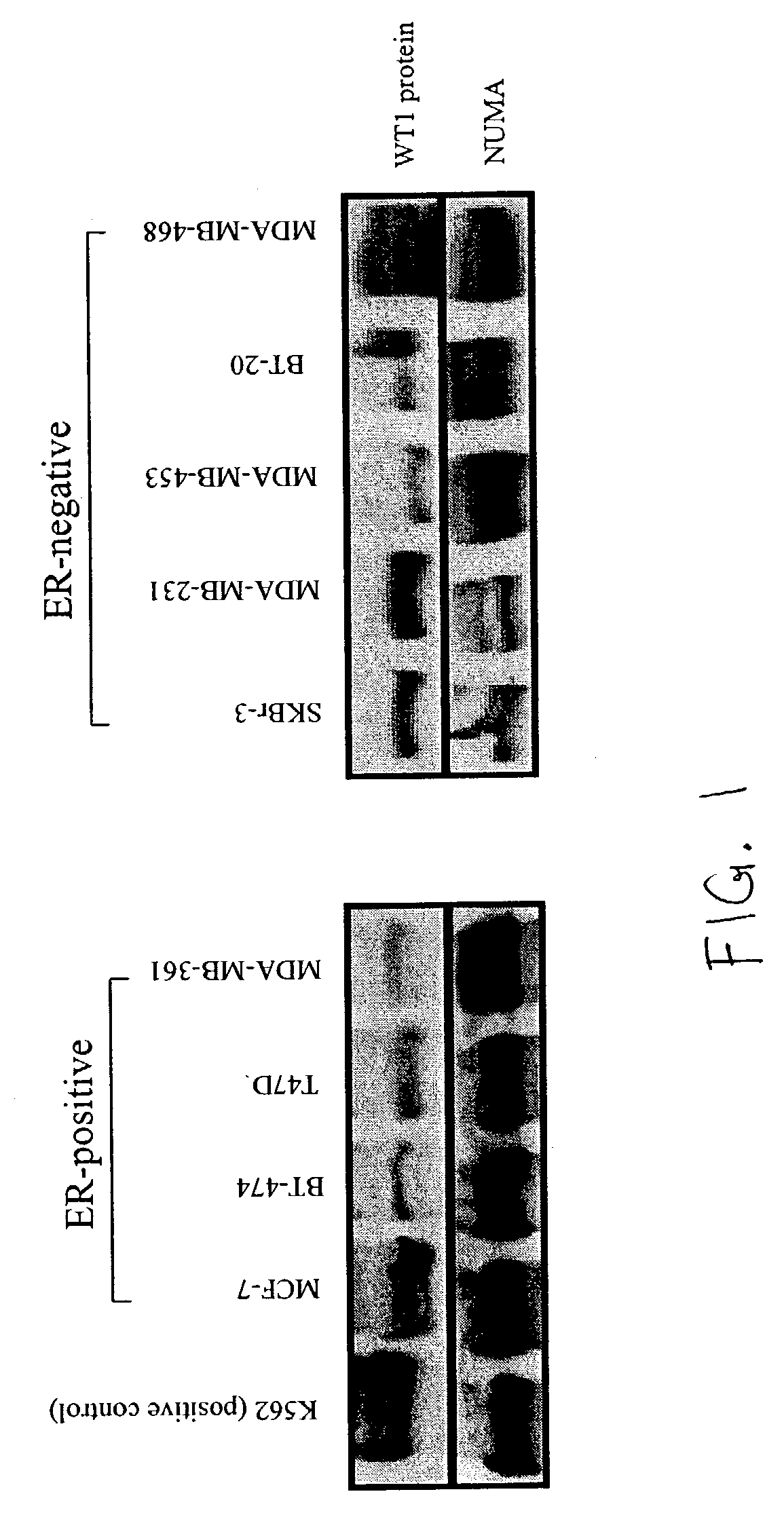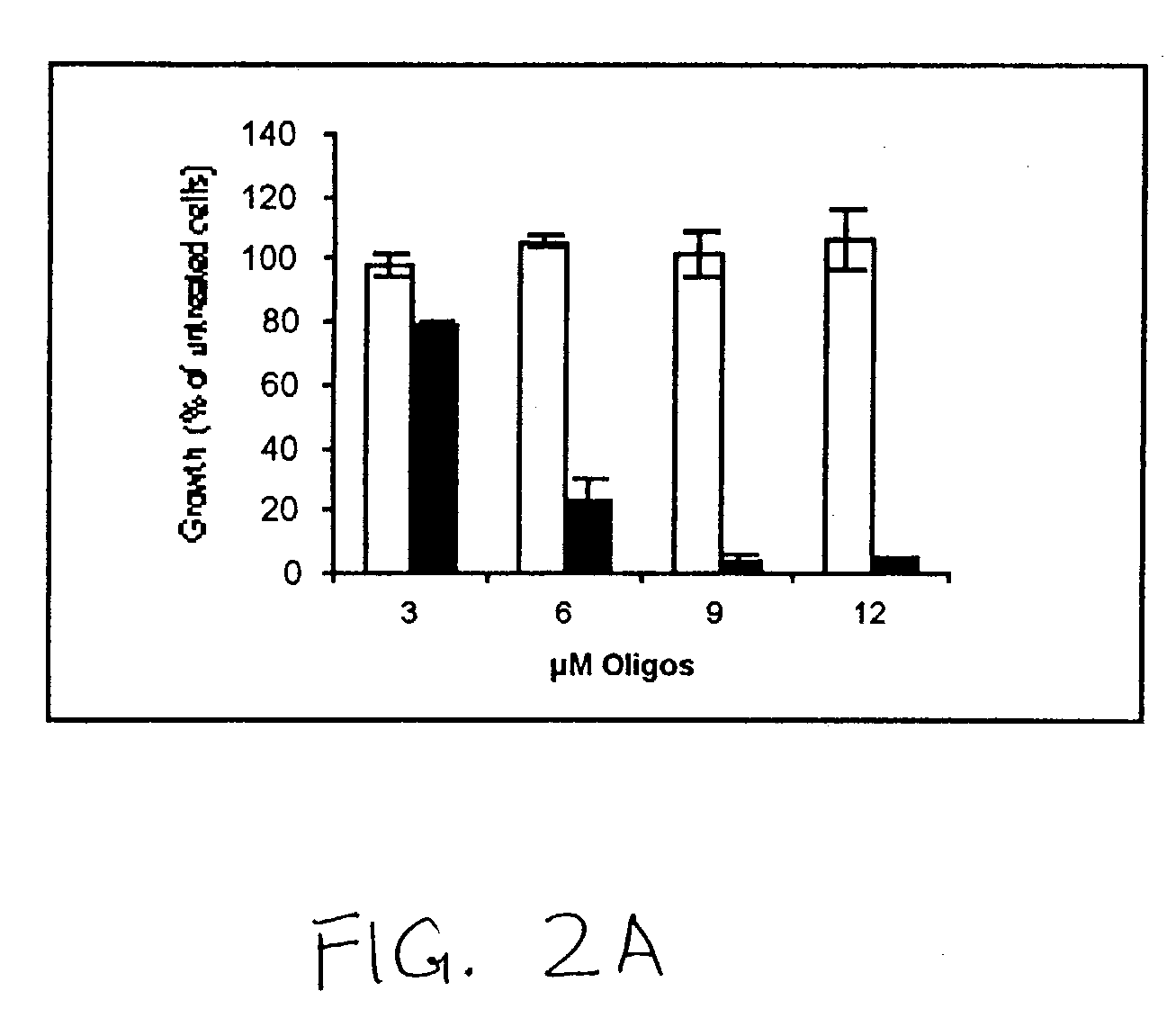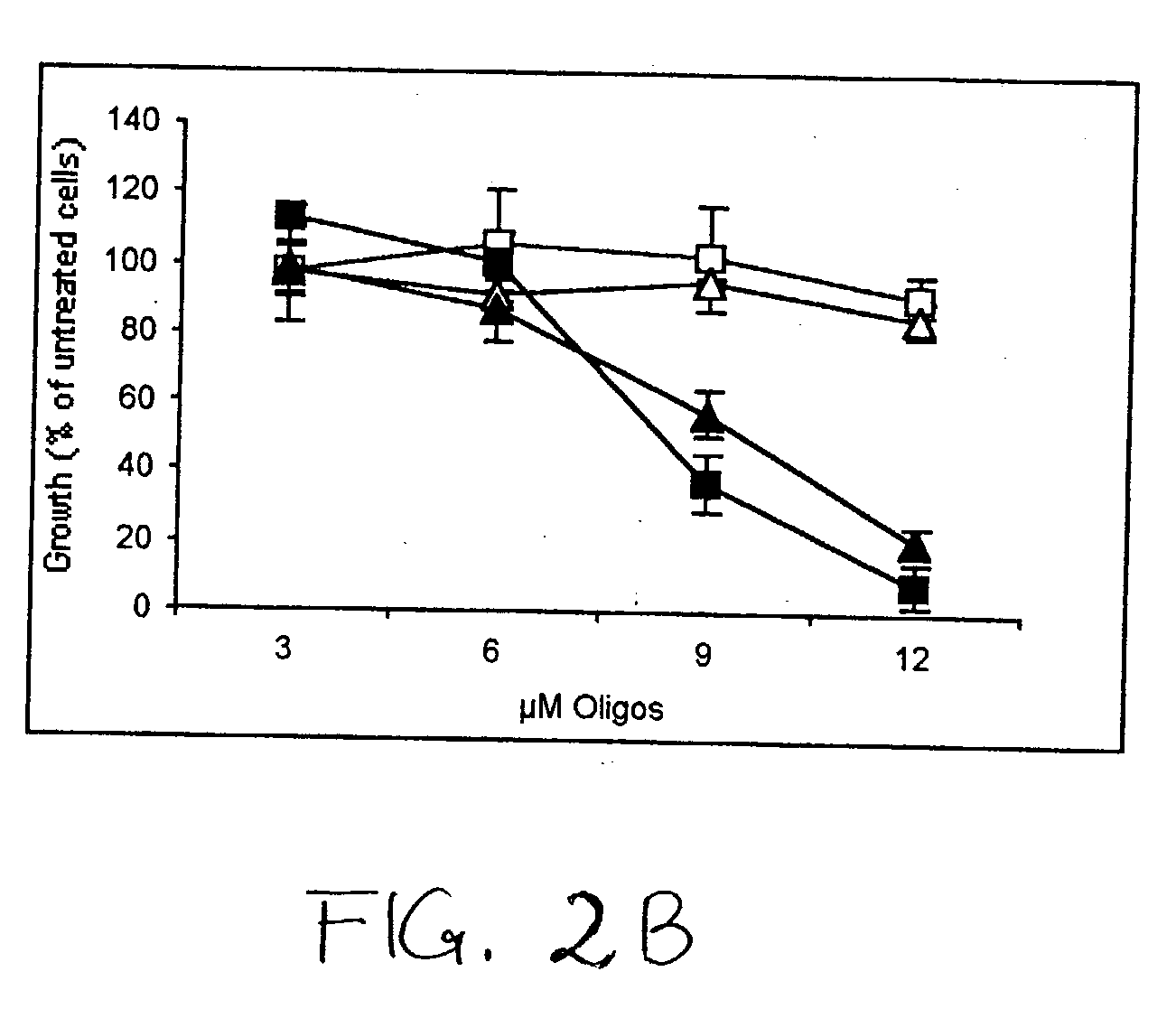WT1 antisense oligos for the inhibition of breast cancer
a breast cancer and antisense oligo technology, applied in the direction of instruments, peptide/protein ingredients, genetic material ingredients, etc., can solve the problems of not being able to completely eradicate cancer, side effects, killing non-cancerous cells, etc., to achieve high titers, high infectivity of adenovirus, and higher gene expression levels
- Summary
- Abstract
- Description
- Claims
- Application Information
AI Technical Summary
Benefits of technology
Problems solved by technology
Method used
Image
Examples
example 1
[0276] Materials And Methods
[0277] Cell Culture
[0278] The ER.alpha.-positive breast cancer cell lines MCF-7, BT-474, T-47D, and MDA-MB-361 (Sutherland et al., 1988; Fitzgerald et al., 1997), and the ER.alpha.-negative breast cancer cell lines SKBr-3, MDA-MB-231, MDA-MB-453, BT-20, and MDA-MB-468 (Fitzgerald et al., 1997; Love-Schimenti et al., 1996) were obtained from the American Type Culture Collection (Manassas, Va.). They were propagated in DMEM / F12 medium supplemented with 10% FCS. The human leukemia cell line K562, chosen as a positive control cell line because of its high expression of WT1 protein (Yamagami et al., 1996), was also obtained from ATCC and propagated in RPMI 1640 medium supplemented with 10% FCS. All cell lines were incubated in 95% air and 5% CO.sub.2 at 37.degree. C.
[0279] Western Blotting
[0280] Western blotting was used to determine the expression levels of WT1 proteins in nuclear extracts from breast cancer and leukemia cell lines since these proteins are kn...
example 2
[0290] Expression of WT1 Protein in Breast Cancer Cell Lines
[0291] The endogenous expression of the 52-54 kDa WT1 protein in breast cancer cell lines was assessed and K562 leukemic cells were used as positive control. WT1 protein was detected in the nuclear extracts of both ER-positive and ER-negative cell lines (FIG. 1).
[0292] The results obtained indicate that WT1 protein is vital for the proliferation of breast cancer cells, regardless of whether the cells are ER-positive or ER-negative. The inventors found no correlation between the basal expression of WT1 protein and the inhibitory response to L-WT 1. Nor was any correlation evident between inhibition by L-WT1 and the status of p53 protein, as MCF-7 is the only cell line that expresses the wild-type 53 protein (Casey et al., 1991).
[0293] Reduction of WT1 Protein Expression Leads to Growth Inhibition of Breast Cancer. It was first verified that L-WT1 oligos could inhibit the growth of K562 leukemia cells (Yamagami et al., 1996; ...
PUM
| Property | Measurement | Unit |
|---|---|---|
| concentration | aaaaa | aaaaa |
| diameter | aaaaa | aaaaa |
| volume | aaaaa | aaaaa |
Abstract
Description
Claims
Application Information
 Login to View More
Login to View More - R&D
- Intellectual Property
- Life Sciences
- Materials
- Tech Scout
- Unparalleled Data Quality
- Higher Quality Content
- 60% Fewer Hallucinations
Browse by: Latest US Patents, China's latest patents, Technical Efficacy Thesaurus, Application Domain, Technology Topic, Popular Technical Reports.
© 2025 PatSnap. All rights reserved.Legal|Privacy policy|Modern Slavery Act Transparency Statement|Sitemap|About US| Contact US: help@patsnap.com



